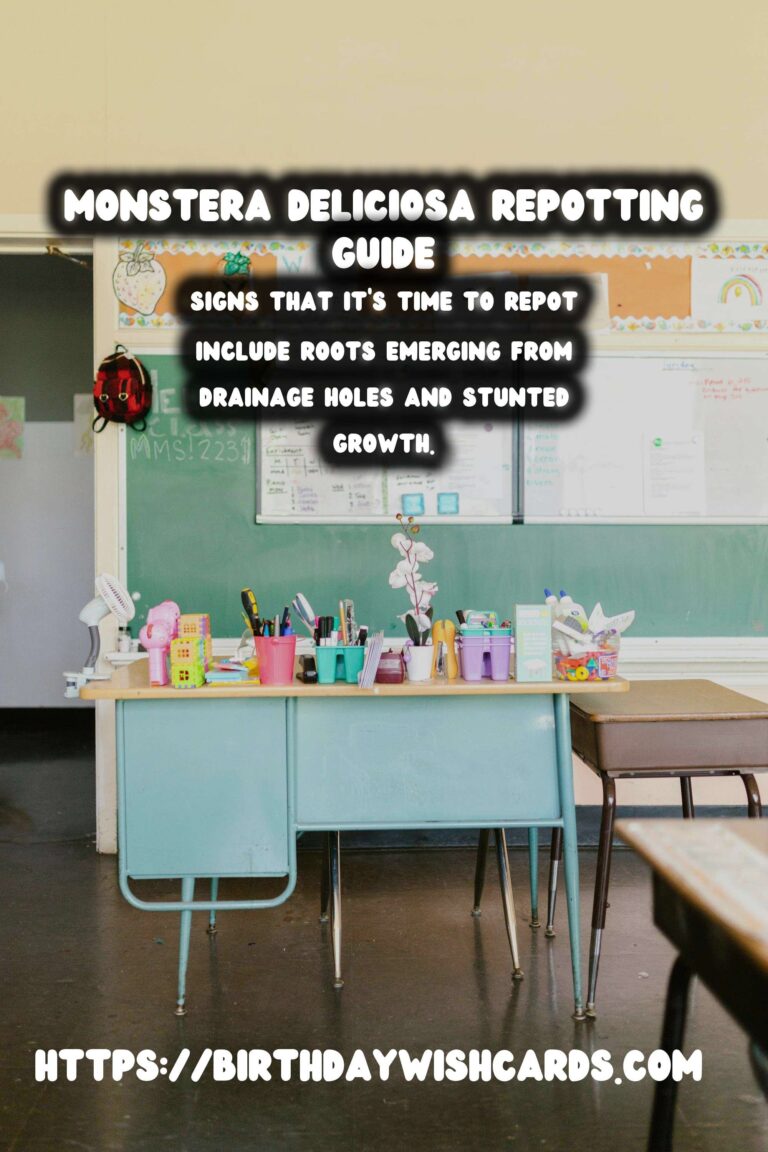
Monstera Deliciosa, commonly known as the Swiss Cheese Plant, is a popular houseplant renowned for its distinctive leaves and vigorous growth. Native to the tropical forests of Central America, these plants can thrive indoors with the right care, making them a favorite among plant enthusiasts.
Understanding Your Monstera’s Growth
Understanding the growth pattern of your Monstera Deliciosa is crucial in determining when it’s time to repot. Typically, these plants grow rapidly under proper light and humidity conditions, often requiring repotting every two years. However, growth rates can vary based on environmental factors.
Signs It’s Time to Repot
There are several indicators that your Monstera Deliciosa needs repotting:
- Root Bound: If the roots are circling the pot or emerging from the drainage holes, it’s a clear sign that the plant needs more space.
- Water Retention Issues: If the soil dries out too quickly or water pools on top, the current pot may be too small or the soil compacted.
- Stunted Growth: A noticeable slowdown in growth can indicate that the plant has outgrown its pot.
Choosing the Right Pot and Soil
When repotting, select a pot that is 1–2 inches larger in diameter than the current one to allow room for growth. Ensure the new pot has adequate drainage holes. For soil, a well-draining mixture that retains some moisture is ideal. A blend of peat moss, perlite, and pine bark can provide the right balance.
How to Repot Your Monstera Deliciosa
Follow these steps to successfully repot your Monstera:
- Prepare the New Pot: Add a layer of soil to the bottom of the new pot.
- Remove the Plant: Gently remove the Monstera from its current pot, being careful not to damage the roots.
- Loosen the Roots: If the roots are tightly bound, gently tease them apart to encourage new growth.
- Position the Plant: Place the Monstera in the new pot, ensuring the root ball is centered and at the same depth as before.
- Fill with Soil: Add soil around the root ball, pressing down lightly to eliminate air pockets.
- Water Thoroughly: Water the plant until water drains from the bottom, ensuring the soil is evenly moist.
Aftercare Tips
After repotting, give your Monstera some time to adjust. Keep it in a location with indirect light and maintain consistent humidity. Avoid fertilizing immediately after repotting to prevent stress. Instead, wait a few weeks before resuming regular feeding.
Common Repotting Mistakes to Avoid
Avoid these common mistakes to ensure successful repotting:
- Overwatering: Newly repotted plants need less water initially.
- Choosing the Wrong Pot Size: Too large a pot can lead to waterlogging.
- Using Poor Soil: Ensure the soil is suitable for tropical plants.
Conclusion
Repotting your Monstera Deliciosa is an essential part of its care routine, promoting healthy growth and preventing issues like root rot. By recognizing the signs of when to repot and following the proper steps, you can ensure your plant thrives for years to come.
Monstera Deliciosa typically requires repotting every two years. Signs that it’s time to repot include roots emerging from drainage holes and stunted growth. Choose a pot 1–2 inches larger in diameter than the current one with proper drainage. A well-draining soil mix of peat moss, perlite, and pine bark is ideal. After repotting, avoid fertilizing immediately to allow the plant to adjust.
#MonsteraDeliciosa #PlantCare #Repotting #Houseplants #Gardening

